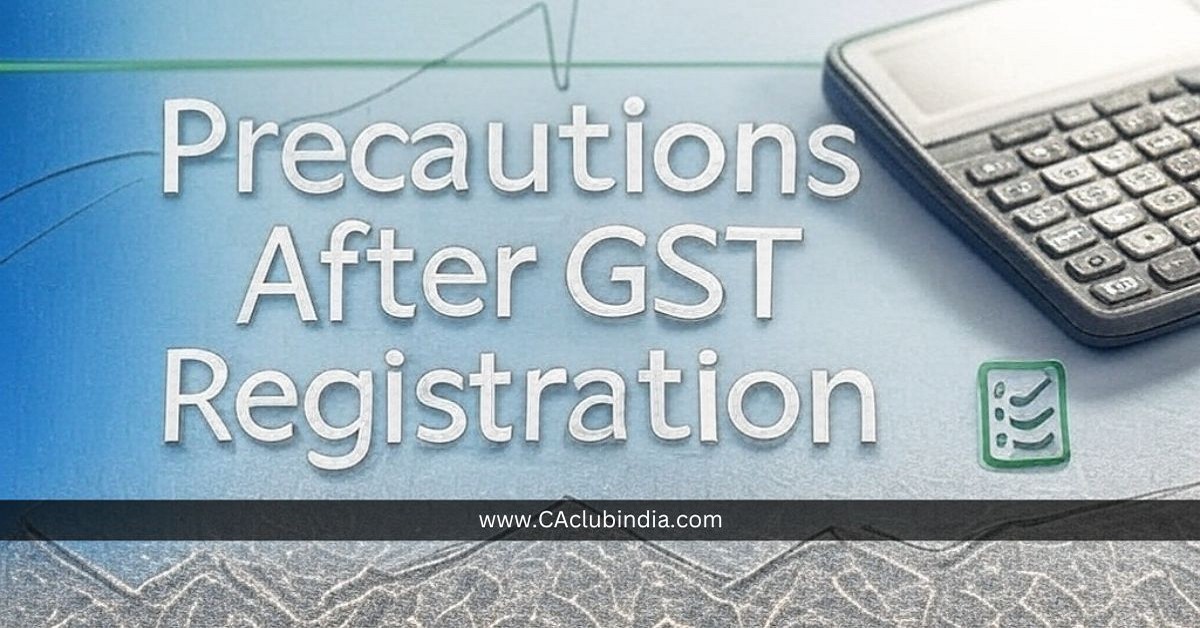The rulers who are one side of the coin has brought GST into the implementation as a Good and Simple Tax from 1/7/2017 by conducting special parliament sessions on the night of 30/6/2017 off-course they are having a sleepless night on that day only. For followers RTP and Consultants not having sleepless nights after that day who are the other side of coin. GST is not at all Good and simple tax it is very difficult to follow by complying day to day changes. For non-compliance, there are heavy penalties in Chapter XIX of CGST Act,2017. To avoid them, we have tried to explain the important acts and rules in a lucid way, which are useful in day-to-day implementation.

Registration
1. Entity needs to include Bank Account details in GST website within 45 days from the date of GST Registration or within the first GST Return filing.
2. GST Registration certificate with Number should be maintained in two places at PPOB/POB
- Billing counter
- Any other prominent place
3. Display of registration certificate and Goods and Services Tax Identification Number on the name board (Rule 18)
4. Services received for Freight, rent from an unregistered person tax should be paid under RCM (Reverse Charge Mechanism)
- RCM applies only for Specified Goods/Services (for more information, seek advice fromthe auditor)
Books Maintenance
1. Bill Books are to be maintained with the GST number mentioned on it and invoices to be serially numbered.
2. Every year bill book serially numbered starting from 01 is recommended.
3. Books should be maintained for 5 years from the date of GSTR 9 due date (not from the date of return filed by the entity)
4. Books of Accounts will include invoices, bills of supply, delivery challans, credit notes, debit notes, receipt vouchers, payment vouchers and refund vouchers, accounts of Stock (Quantity), input tax credit availed
5. Books of Accounts should be maintained at PPOB (Not at the consultant office or any other place) (PPOB-Principal Place of Business)
6. Sale invoice exceeding total Rs 50,000/- per invoice where movement has happened waybill should be generated compulsorily either by Buyer/seller.
7. Any sale value exceeding Rs 200/-, the bill should be generated compulsorily
8. HSN code (6 digits) should be mentioned clearly in every bill
9. For executing works contract they shall keep separate accounts for works contracts
10. Every owner or operator of a warehouse or godown or any other place used for storage of goods and every transporter, irrespective of whether he is a registered person or not, shall maintain records of the consigner, consignee and other relevant details of the goods in such manner as may be prescribed.
11. On advance received for services, the RTP has to raise the voucher and has to pay tax for pertaining to the month. Whereas the advance received for goods is not applicable.
12. A GST Credit Note should be issued by RTP 13th of November of that previous FY. For example, RTP can issue a Credit note for the F.Y 2024-25 by 13/11/2025.
Composite scheme
1. Turnover below 1.5 crore of sale of goods can opt for the composition scheme where tax shall be calculated 1% on total turnover with some limitation as specified in Section 10 of CGST Act,2017
2. Tax to be paid on every 18th of completing of quarter (say for Q-1 on 18th of July) and within June-30h GST-4(Annual Return) return should be filed.
3. The composite scheme shall not apply to some specific business as per section 10 of CGST Act,2017.
4. Composition scheme can apply to the Service Sector also where ATO (Aggregate Total Turnover) has not exceeded Rs50 lakhs for further clarification, you can refer 10(2A) of CGST Act,2017
Visiting by GST Officer
GST officer may inspect PPOB/POB only in 3 situations:
- Search & Seizure of Goods (Sec 67 with authorisation without prior intimation)
- Physical verification of business premises in certain cases. After verification in the portal of the concerned RTP will be reflected physical verification is done (Rule 25)
- During Audit (Sec 65 with prior information)
Other than these GST officer cannot inspect the PPOB/POB.
Return Filing
Every Regular RTP (Registered Taxable Person) has to file GST returns, namely GSTR-1 & GSTR-3B
|
Return Type |
Due Date |
|
GSTR-1 |
11th of every month of the previous month transaction |
|
GSTR -2B |
Every RTP has to check GSTR-2B, which will be updated on the 14th of every month |
|
GSTR -3B |
Every RTP has to file GSTR-3B by the 20th of every month |
|
GSTR-9 (Annual Return) |
31st of December where AATO has crossed 2 crores, is mandatory. Below is recommended where reconciliation is required. |
|
GSTR-9C (Reconciliation Statement) |
31st of December where AATO has crossed 5 crores is mandatory. |
For this, returns Late fees and Interest will be calculated automatically except for GSTR-2B and GSTR-1.
Input Tax Credit
1) Every RTP can avail input which is reflected in GSTR-2B and possessing invoice from 1/1/2022 is a statutory right. But it is not right as per the constitution, as per Article 300A.
2) ITC can be availed on inputs, input services and capital goods with certain limitation as specified in Section 17(5) of CGST Act,2017 like gift, goods stolen, destroyed, restaurant services, beauty treatment, health services, cosmetic and plastic surgery membership fees of clubs, Passenger Motor vehicles of below capacity of 14 members and related services to vehicle(Owner owned vehicles nothing but white board), for self-consumption, Any tax paid u/s 74 of CGST Act 2017, Goods/Services/Works Contract used for construction of immovable property.
3) Regular RTP has to make payment to buyers/vendors from whom he has taken ITC within 180 days. Otherwise, we have to temporarily reverse ITC with interest (Rule 37).
4) Taxpayer has to pay 1% through the cash ledger for the discharge of output tax liability remaining amount can be used from ITC if available provided their sale turnover per month exceeds 50 lakhs. Example, if an RTP has to pay Rs.5 lakhs as output tax liability then he has to discharge at least Rs 5000 from the cash ledger, remaining from the credit ledger. (Rule 86B)
5) RTP having both exempted and taxable supplies availing common ITC then he has to take proportionately as per Rule 42 & 43, including capital goods.






 CAclubindia
CAclubindia

